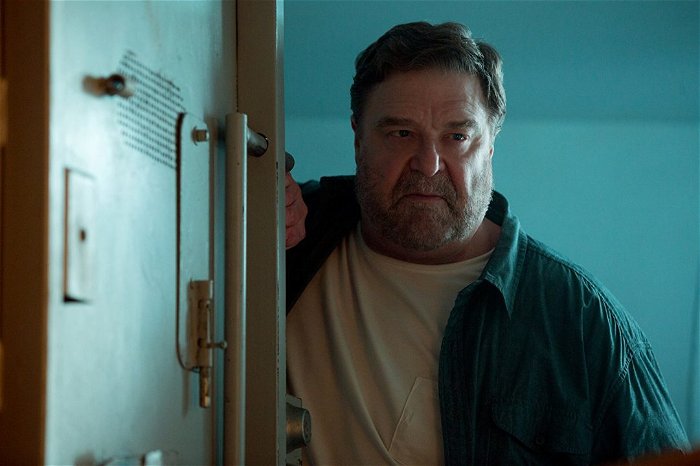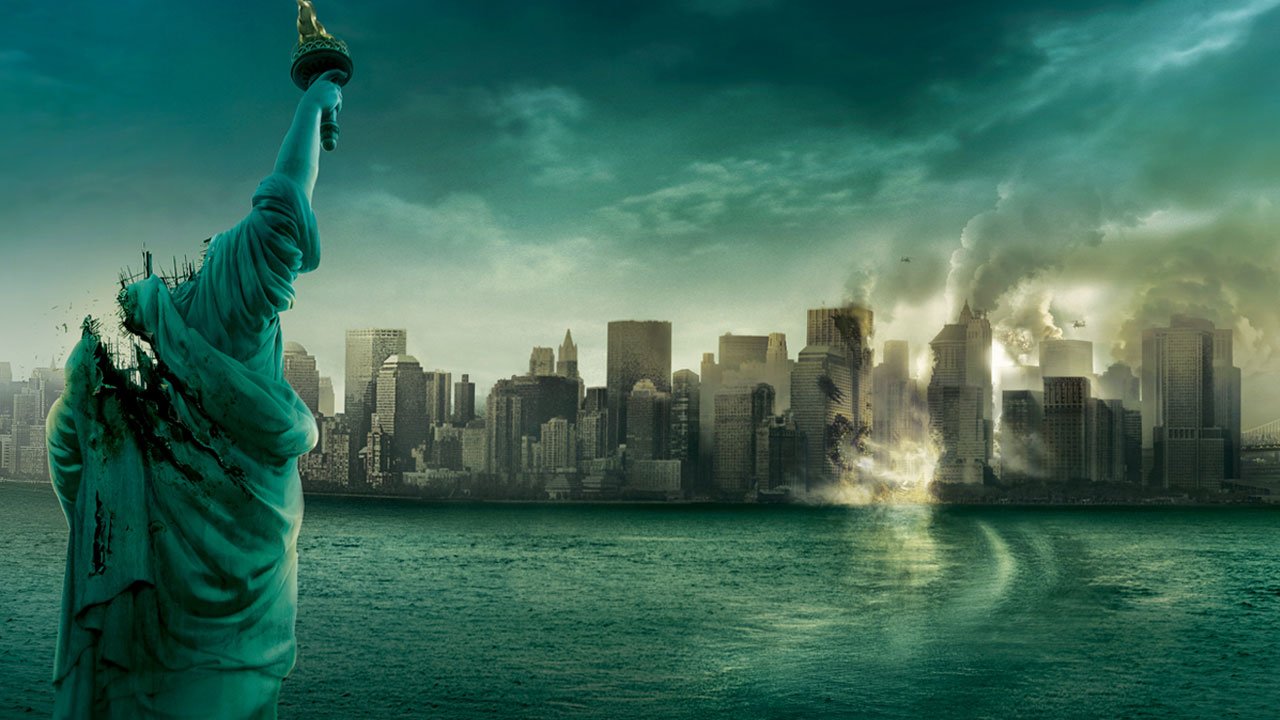The Cloverfield expanded universe needs to end.
The most recent entry in producer J.J. Abrams’ time-bending sci-fi franchise, The Cloverfield Paradox, released on Netflix in surprising fashion during Super Bowl LII. There’s no denying it’s exciting to see a film get announced and then actually released a few hours later, as Netflix and Abrams will undoubtedly have impacted the film industry moving forward. Get ready for more surprise movie releases in the near future.
But The Cloverfield Paradox, and yes even 10 Cloverfield Lane, don’t fit into the Cloverfield franchise. And this universe Abrams has been attempting to build for a decade now feels forced and jarring rather than being genuinely exciting and trendsetting.

Cloverfield Paradox, directed by Julius Onah, offers connective tissues which attempt to tie together all three of these disparate Cloverfield movies. There are easter eggs and references galore, with a large chunk of Paradox focusing on the destruction of a city at the hands of everyone’s favourite mysterious Cloverfield monster. Yes, most of Cloverfield Paradox does focus on a space crew trapped inside the Cloverfield Station who are attempting to reproduce a particle accelerator due to an energy crisis on Earth. It’s a space thriller first and foremost, or at least it tries to be. But the film’s attempt to explain the origins of these monsters and aliens, and how all of these stories connect is muddled and poorly executed.
To quickly summarize, Paradox pretty much reveals that a dimensional rift caused by the Cloverfield Station space crew made these monsters appear on Earth. Also, it seems like all three movies take place in three distinct timelines. By opening this rift in space, alternate versions of Earth get invaded by different otherworldly beings. Cloverfield and Paradox get massive, Godzilla-like monsters, while 10 Cloverfield Lane gets nasty aliens. In theory, this all sounds amazing. However, these films never truly connect.
To have something as lazy as a dimensional rift be the main explanation for the biggest mysteries behind the Cloverfield films is disappointing. This shouldn’t be how a film universe gets built and fleshed out. Seeing Roger Davies’ Michael character roam the streets of a ravaged city and spotting the silhouette of a monster is pure, lazy fan service rather than being a clever way of tying into the original film.
This poor world and universe building is not because Paradox is a lacklustre movie, as 10 Cloverfield Lane also suffers from the same problems. It’s a well written and well-made thriller carried by three great actors. Save for the last 15 minutes, 10 Cloverfield Lane is its own, low budget film about three strangers residing in a bunker. It has nothing to do with Cloverfield until Mary Elizabeth Winstead’s character Michelle ventures outside and starts running from aliens, which have no proper introduction or explanation for being part of the story. It feels like they are just there because the movie has Cloverfield in the title.
The usage of ARG (Alternate Reality Gaming), Cloverfield’s off-camera storytelling device, is yet another great idea in theory but offers very little when it comes to universe building. ARG doles out character and background details via website and online clues, like the origins of John Goodman’s character Howard Stambler from 10 Cloverfield Lane. You need to be a dedicated fan to seek out these details, but they offer little in terms of making sense of what Abrams is trying to create here.

It’s also important to note 10 Cloverfield Lane and The Cloverfield Paradox did not start out as Cloverfield films, and it shows. Uziel revealed in an interview last year Paradox, originally called God Particle, was written before 10 Cloverfield Lane and the expanded Cloverfield universe was even a thing to begin with. Uziel had been working on the script since 2012. Is it really surprising Paradox fails to flesh out the Cloverfield universe in a satisfying way?
Cloverfield 4, or as J.J. Abrams recently called it, Cloverfield Oblivion, is rumoured to have finished filming and recent reports suggest it’s set to open in theatres later this year. The story is said to be about a pair of American paratroopers battling monsters during D-Day. Here’s hoping it makes a much better case for this Cloverfield universe to continue to exist.
Liked this article and want to read more like it? Check out more by Aleksander Gilyadov, such as Zombies and Gore: A Brief History of Resident Evil, and Great, a Chainsaw: A History of Horror Games!
Want to see more videos? Subscribe to our YouTube channel and check out the First 15: Monster Hunter World Beta: the Insatiable Nergigante, Dissidia Final Fantasy NT, Star Wars Battlefront II, Sonic Forces + Episode Shadow, and Super Mario Odyssey!
Don’t forget to tune in every Friday the Pixels & Ink Podcast to hear the latest news, previews, and in-depth game discussions!
Never miss when new CGM articles go out by following us on Twitter and Facebook!
CGMagazine is Canada’s premiere comics and gaming magazine. Subscribe today to get the best of CGM delivered right to your door! Never miss when a new issue goes live by subscribing to our newsletter! Signing up gives you exclusive entry into our contest pool. Sign up once, you’ll have a chance to win! Sign up today!





